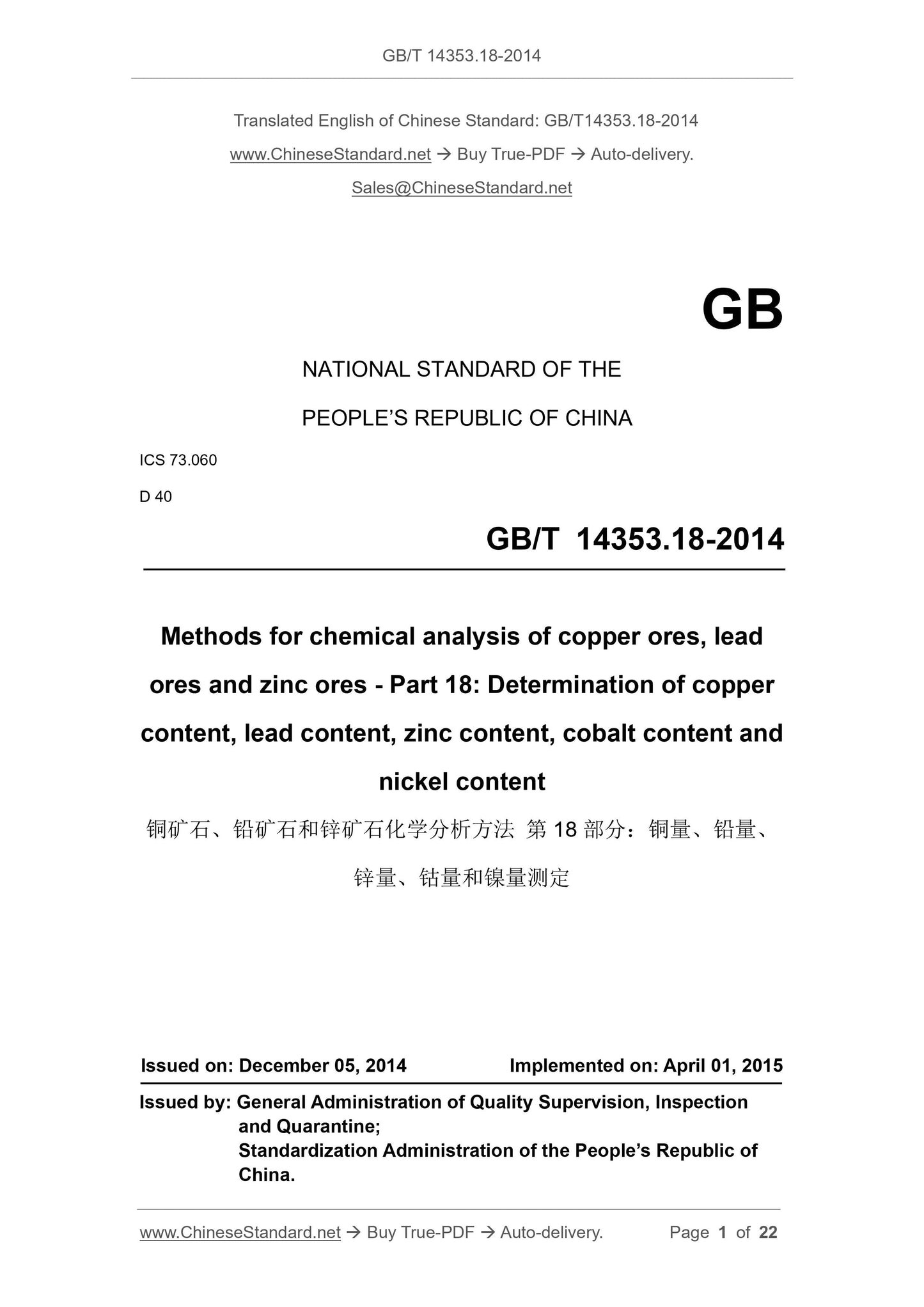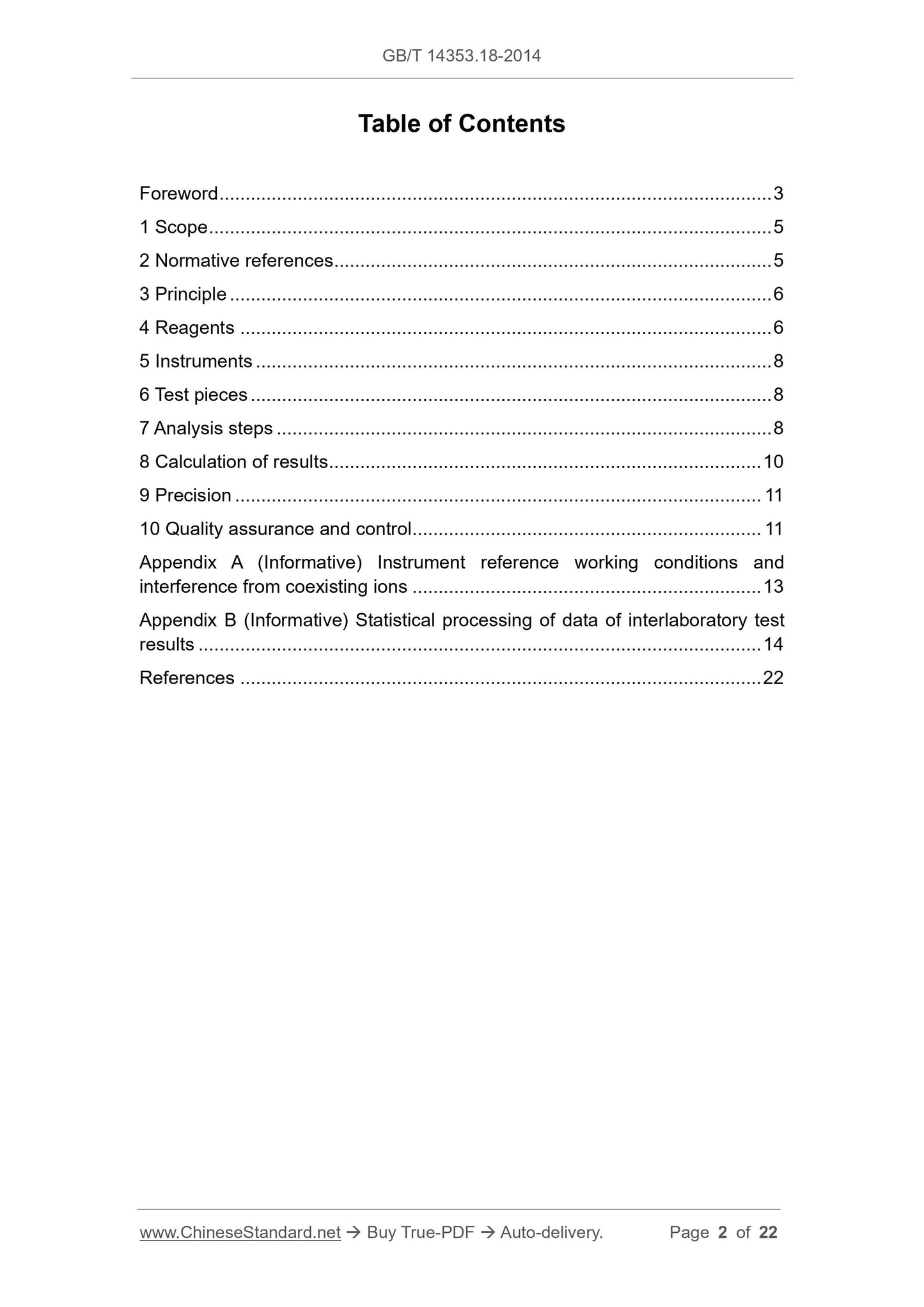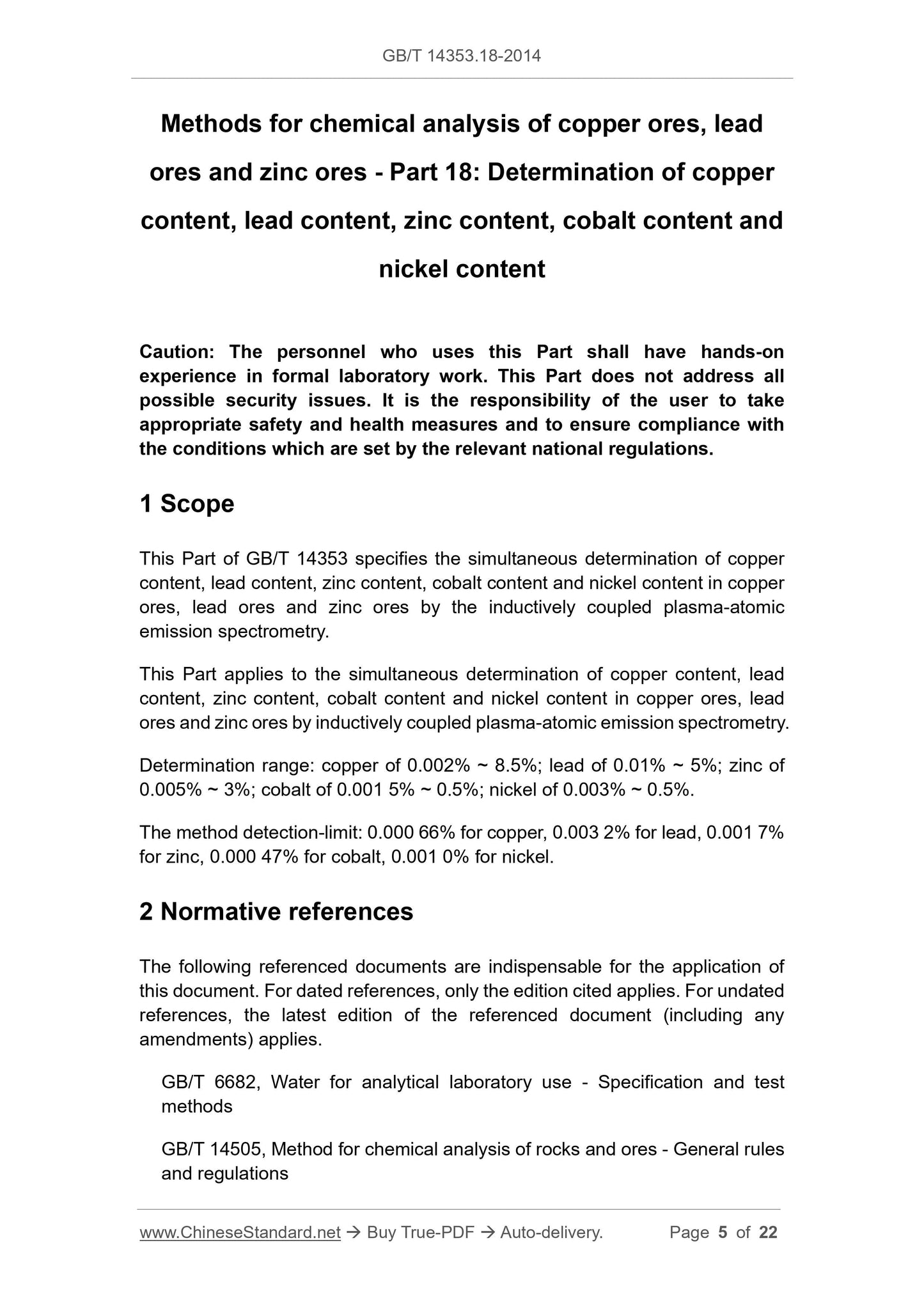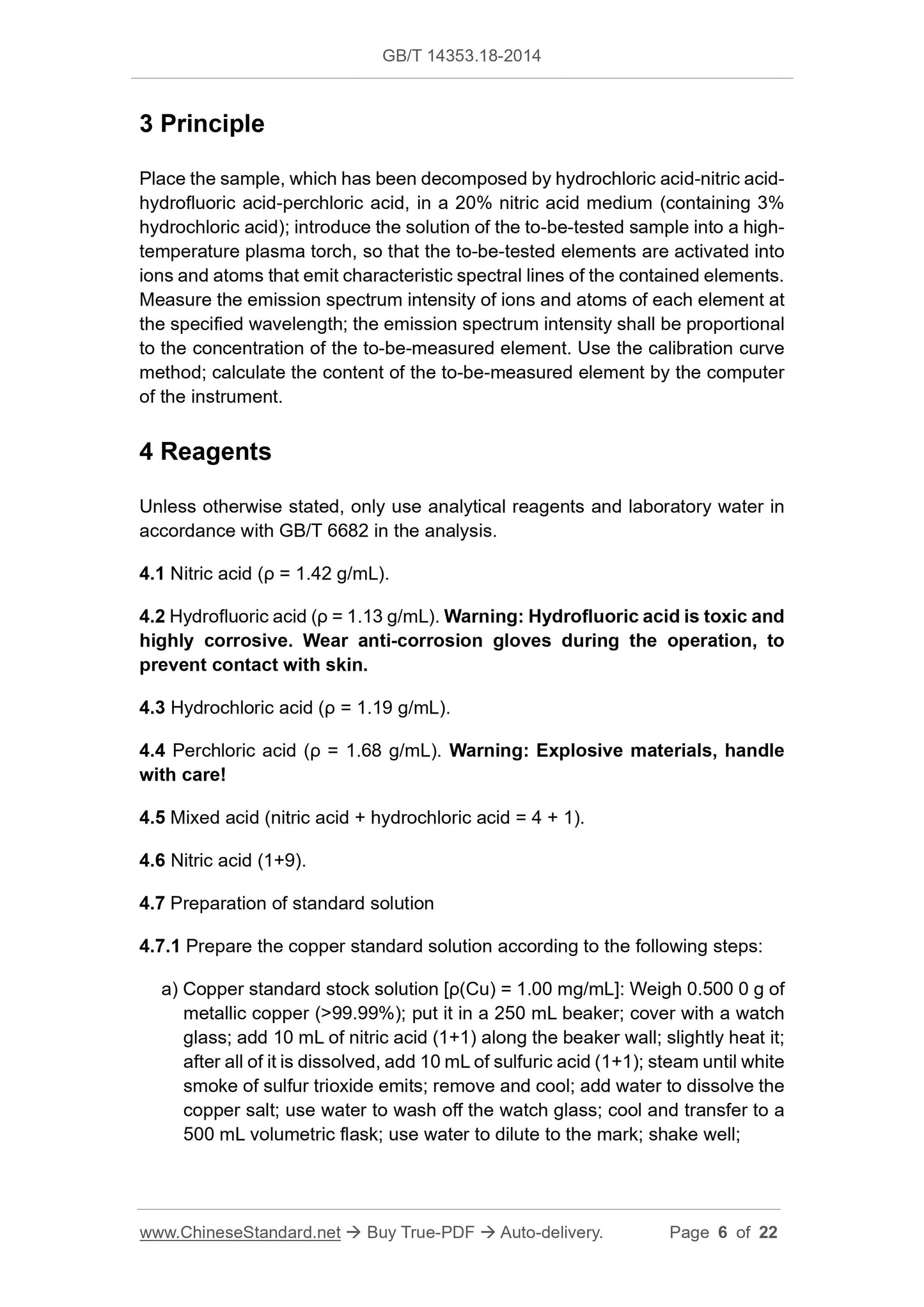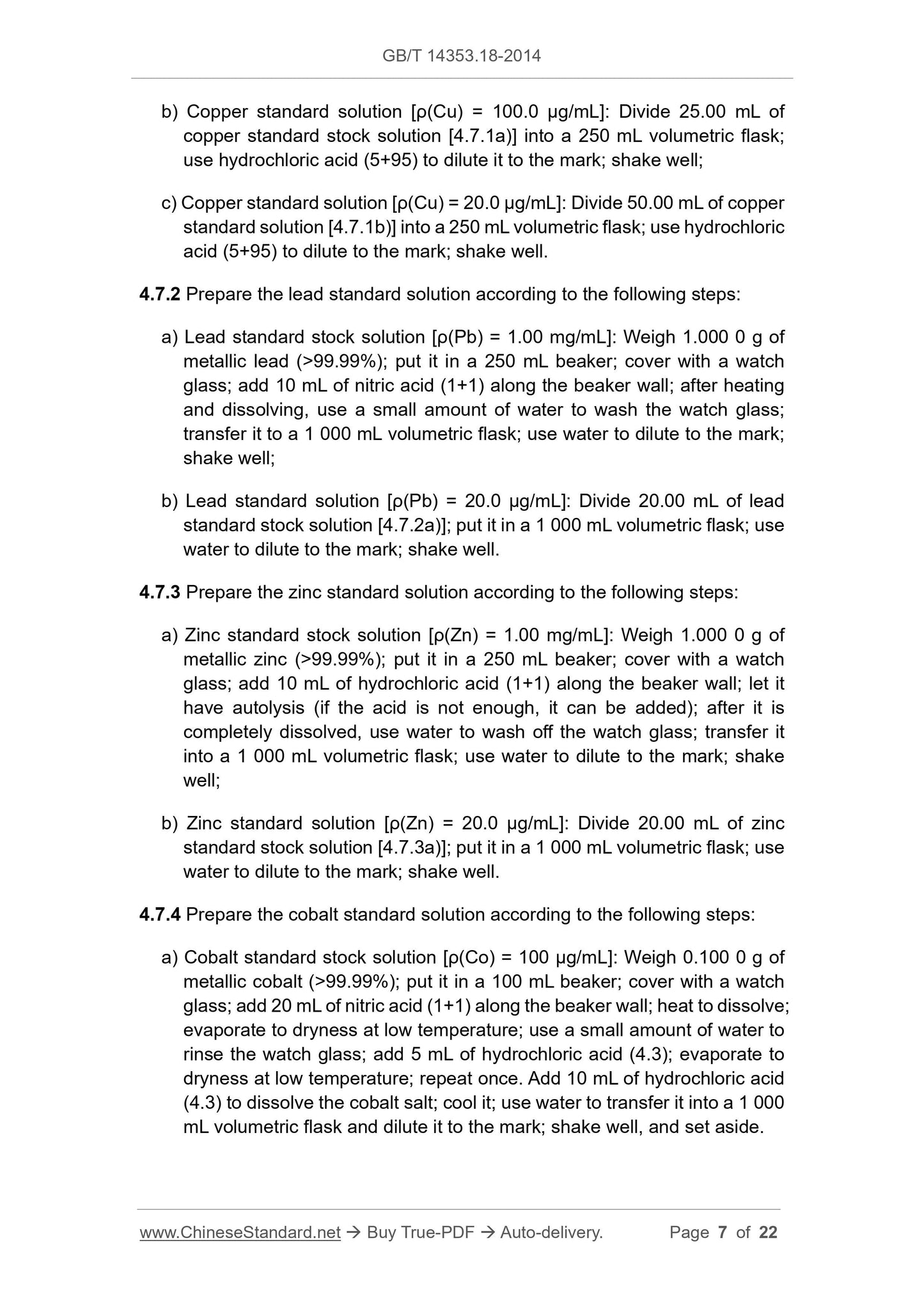1
/
of
5
www.ChineseStandard.us -- Field Test Asia Pte. Ltd.
GB/T 14353.18-2014 English PDF (GB/T14353.18-2014)
GB/T 14353.18-2014 English PDF (GB/T14353.18-2014)
Regular price
$230.00
Regular price
Sale price
$230.00
Unit price
/
per
Shipping calculated at checkout.
Couldn't load pickup availability
GB/T 14353.18-2014: Methods for chemical analysis of copper ores, lead ores and zine ores - Part 18: Determination of copper content, lead content, zinc content, cobalt content and nickel content
Delivery: 9 seconds. Download (and Email) true-PDF + Invoice.Get Quotation: Click GB/T 14353.18-2014 (Self-service in 1-minute)
Newer / historical versions: GB/T 14353.18-2014
Preview True-PDF
Scope
This Part of GB/T 14353 specifies the simultaneous determination of coppercontent, lead content, zinc content, cobalt content and nickel content in copper
ores, lead ores and zinc ores by the inductively coupled plasma-atomic
emission spectrometry.
This Part applies to the simultaneous determination of copper content, lead
content, zinc content, cobalt content and nickel content in copper ores, lead
ores and zinc ores by inductively coupled plasma-atomic emission spectrometry.
Determination range: copper of 0.002% ~ 8.5%; lead of 0.01% ~ 5%; zinc of
0.005% ~ 3%; cobalt of 0.001 5% ~ 0.5%; nickel of 0.003% ~ 0.5%.
The method detection-limit: 0.000 66% for copper, 0.003 2% for lead, 0.001 7%
for zinc, 0.000 47% for cobalt, 0.001 0% for nickel.
Basic Data
| Standard ID | GB/T 14353.18-2014 (GB/T14353.18-2014) |
| Description (Translated English) | Methods for chemical analysis of copper ores, lead ores and zine ores - Part 18: Determination of copper content, lead content, zinc content, cobalt content and nickel content |
| Sector / Industry | National Standard (Recommended) |
| Classification of Chinese Standard | D40 |
| Classification of International Standard | 73.060 |
| Word Count Estimation | 15,151 |
| Date of Issue | 12/5/2014 |
| Date of Implementation | 4/1/2015 |
| Quoted Standard | GB/T 6682; GB/T 14505 |
| Regulation (derived from) | Announcement of Newly Approved National Standards 2014 No. 27 |
| Issuing agency(ies) | General Administration of Quality Supervision, Inspection and Quarantine of the People's Republic of China, Standardization Administration of the People's Republic of China |
| Summary | This Standard specifies copper ore, lead ore and zinc ores in inductively coupled plasma emission spectrometry determination of copper content, the amount of lead and zinc contents, cobalt and nickel. This Standard is applicable to the simultaneous determ |
Share
